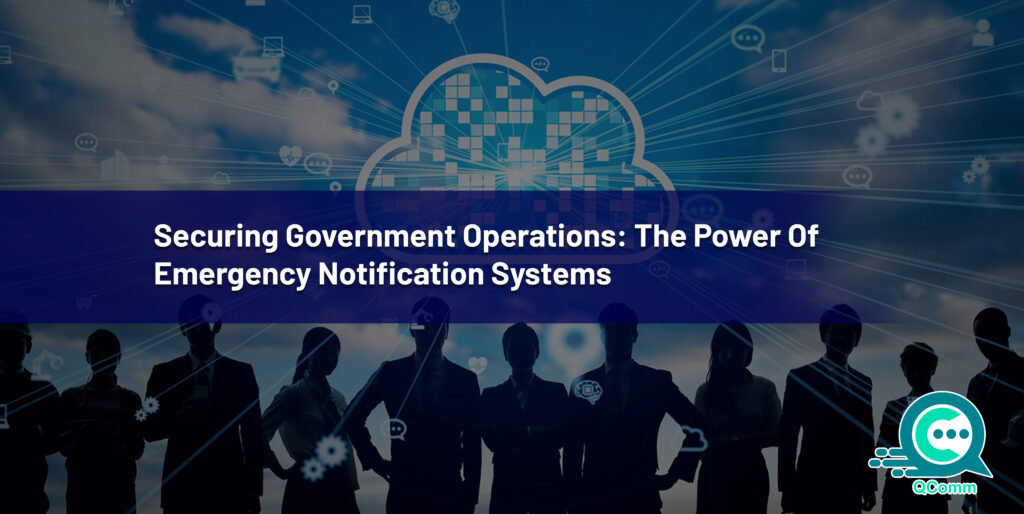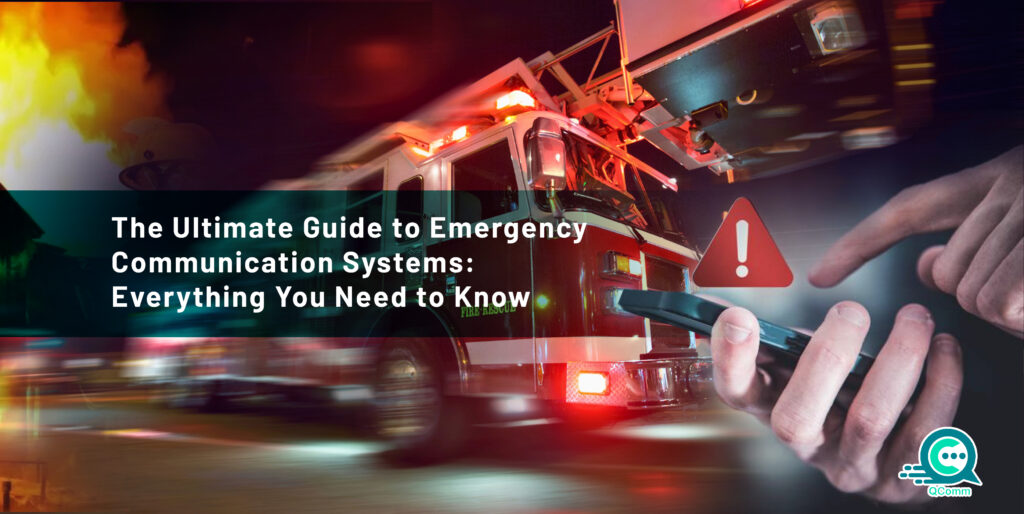
Explore the Essential Features, Best Practices, and Industry Insights to Build a Resilient Emergency Communication Strategy.
Table of contents:
Why Emergency Communication is More Important Than Ever
The modern organizational landscape faces growing challenges, from cyberattacks to natural disasters. These incidents emphasize the need for rapid, reliable communication during crises. However, many businesses remain unprepared without a solid emergency communication plan.
In the Middle East, both the UAE and Saudi Arabia have experienced several notable natural disasters:
- UAE Flooding (April 2024): Record rainfall led to widespread flooding, disrupting transportation and services.
- Dubai Floods (April 2024): Heavy rainfall overwhelmed the city, highlighting concerns over extreme weather.
- Hajj Heatwave (June 2024): Over 1,300 pilgrims died from extreme temperatures exceeding 50°C in Mecca.
These events underscore the importance of having effective emergency communication systems to respond quickly and mitigate the impacts of such crises.
Emergencies don’t discriminate—they strike industries of all types, from healthcare and manufacturing to IT and retail. The aftermath often reveals a stark reality: the absence of an effective emergency response system not only disrupts operations but erodes trust, damages reputations, and in severe cases, endangers lives.
Why Communication Breakdowns Happen
Studies reveal that during critical incidents, miscommunication or delayed messaging contributes to 70% of operational failures. Organizations relying on fragmented communication tools or outdated methods often find themselves scrambling to deliver vital information when it matters most.
No industry or institution is immune to emergencies. Whether it’s a life-threatening medical situation in healthcare, a security breach in corporate offices, a natural disaster affecting manufacturing and retail, or a national crisis requiring government intervention, each sector faces unique challenges. However, they all share this one common thread: the need for a robust emergency communication system. Organizations that fail to prioritize effective emergency response systems risk not only operational downtime but long-term damage to their reputation and public trust.
Every sector, including Healthcare, Education, Retail, Oil and Gas, Government & Corporate Sectors and beyond, is dependent on timely and clear communication during critical events. The implications of inadequate systems are severe, making it clear that emergency notification software and mass notification systems are no longer optional but essential for ensuring the safety, coordination, and swift response of all involved.
Here’s how various industries have leveraged QComm’s services to drive success:
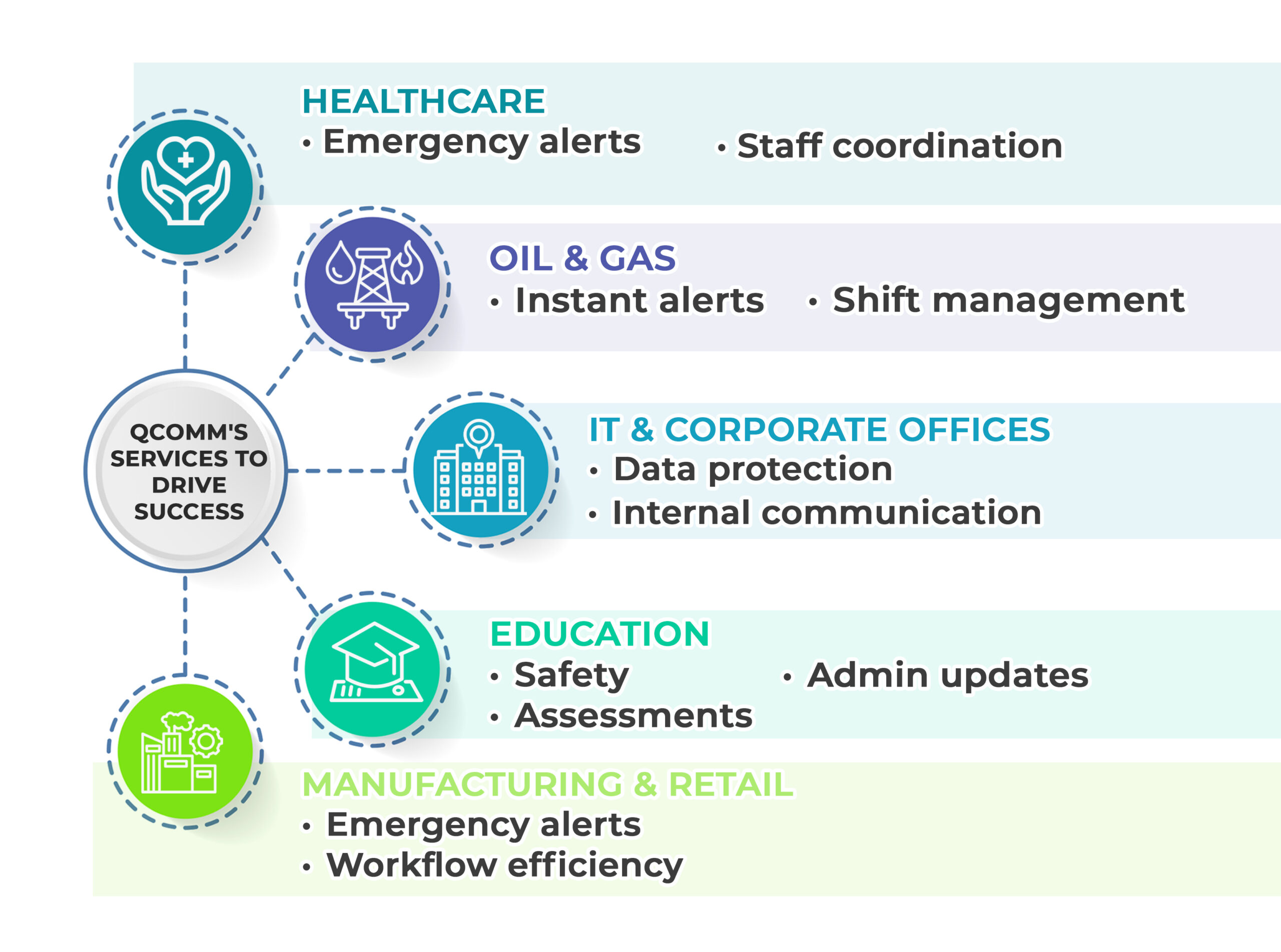
.
Why Effective Emergency Communication is the Cornerstone of Crisis Management
In an era where uncertainties prevail, emergency communication has emerged as the backbone of crisis response strategies. From natural disasters to cyberattacks, every incident highlights the importance of a well-coordinated emergency communication plan. Yet, many organizations remain underprepared, risking operational disruptions and reputational damage.
The Cost of Inadequate Emergency Communication Systems
In every corner of the world, organizations face the universal challenge of navigating emergencies with clarity, speed, and precision. From schools fostering safe learning environments to oil and gas companies managing high-risk operations, the need for robust communication systems transcends industries and geographies
Driving Impact Across Industries
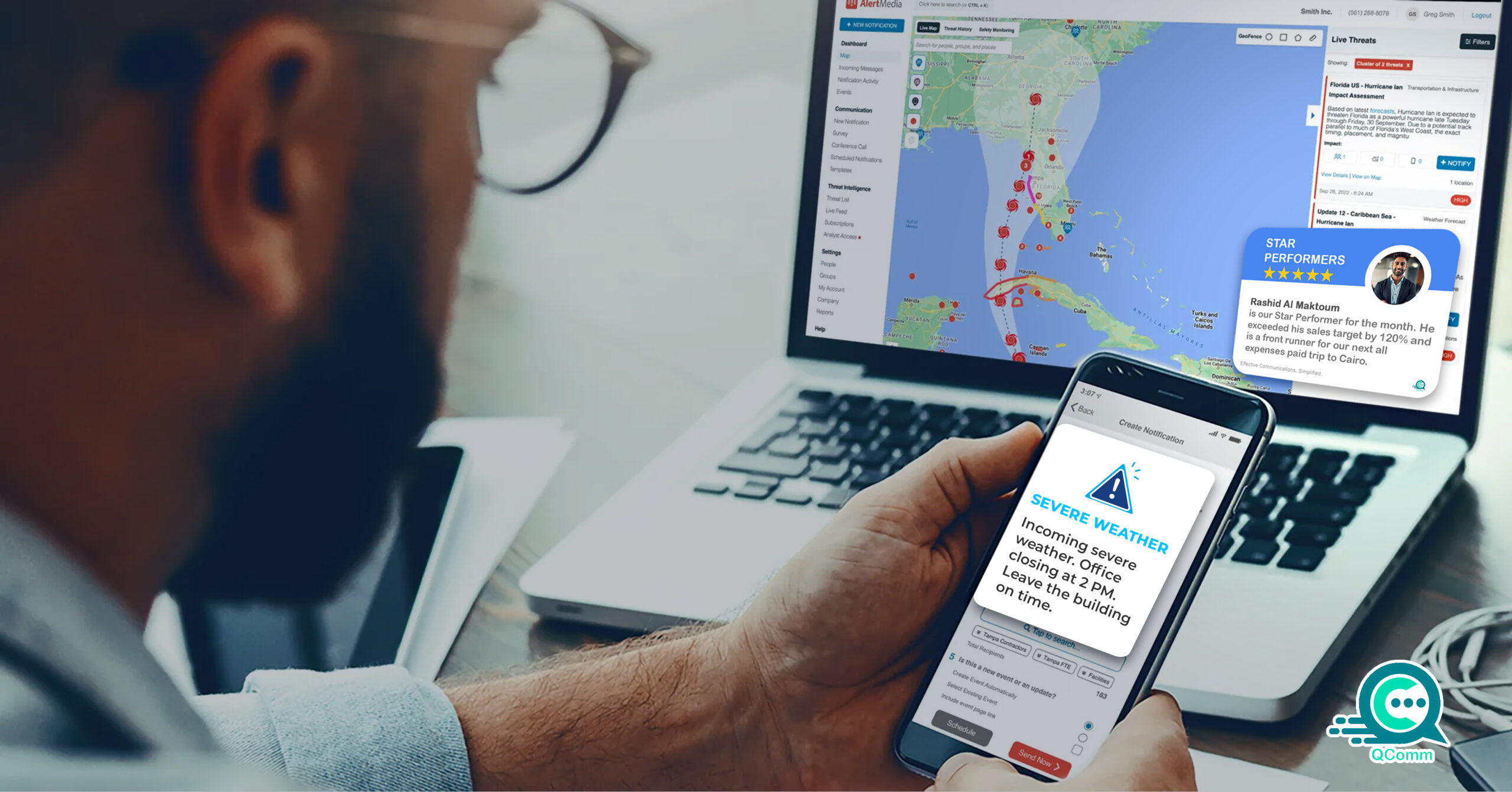
Effective emergency communication systems can provide a lifeline during critical incidents, ensuring a rapid, coordinated response across various industries. But their value doesn’t end in emergencies, they seamlessly integrate into everyday operational workflows to enhance efficiency.
QComm’s mission is rooted in the belief that communication saves more than time—it saves lives, protects reputations, and preserves trust. By combining cutting-edge technologies with tailored strategies, we address the unique demands of every industry we serve.
Take education, where timely alerts and coordinated responses can prevent small incidents from escalating into crises. Or consider the oil and gas sector, where advanced emergency alert systems mitigate risks in environments where every second counts. In retail, finance, and government, mass notification systems streamline critical updates, fostering a sense of control and clarity in moments of uncertainty.
According to industry insights, businesses equipped with real-time communication tools recover 50% faster from disruptions compared to those relying on traditional methods.
Core Features of Qcomm:
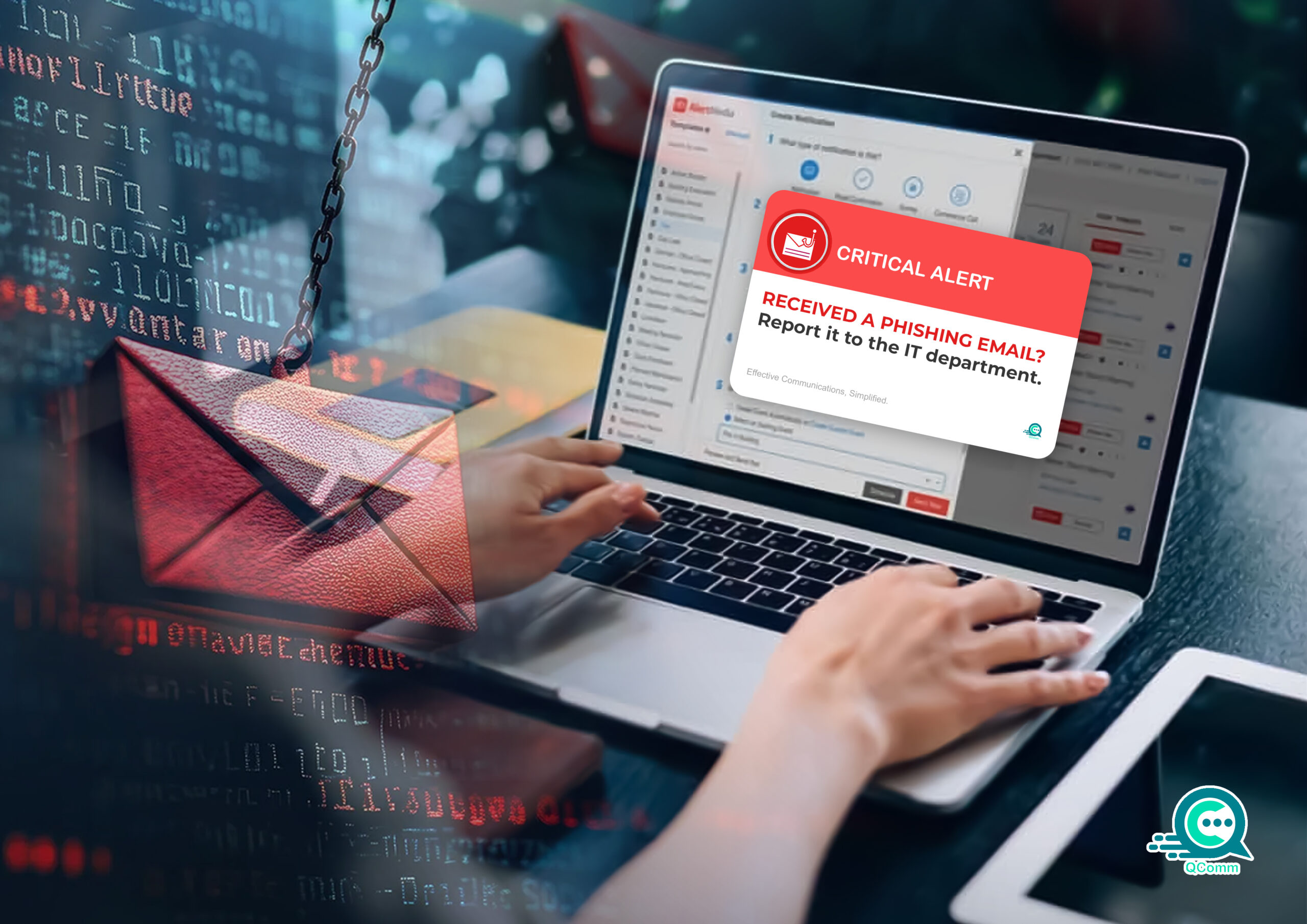
- Real-time Alerts: Real-time notifications enable immediate action during emergencies, from evacuations to critical data breaches. Its rapid response capabilities ensure minimal disruption and improved safety.
- Cross-Platform Accessibility: Accessible across mobile, desktop, and other devices, QComm ensures everyone, no matter where they are, receives timely updates, fostering seamless coordination during emergencies and day-to-day tasks.
Streamlined Coordination: By consolidating communication channels, QComm allows organizations to connect all team members, whether in a crisis or simply to update schedules, shift changes, or administration updates
Shaping the Future of Emergency Communication
The path to resilience is a shared journey—one that calls for innovation, collaboration, and a commitment to excellence. Whether you’re in education, healthcare, oil and gas, finance or the private sector, the solutions we build today will define how we navigate the challenges of tomorrow
The Consequences of Communication Failures
When organizations falter in delivering timely and effective emergency communications, the repercussions extend far beyond operational hiccups. Such failures not only disrupt processes but also have long-lasting impacts on trust, safety, and resilience across industries.
The consequences of communication failures during a crisis extend far beyond immediate disruptions, affecting every facet of an organization’s operations. Here’s a deeper look into the various impacts:
- Operational Downtime: Outdated communication systems lead to delays and disruptions, affecting productivity and causing revenue loss.
- Eroded Trust: Poor communication during emergencies damages relationships and erodes confidence in an organization’s ability to handle crises.
- Risk to Lives: Delayed or unclear alerts in critical sectors like healthcare and education can endanger lives and escalate situations.
- Regulatory Non-Compliance: Failure to meet emergency communication standards can result in penalties, loss of licenses, and reputational damage.
- Escalation of Crises: Minor issues can turn into major crises without timely communication, leading to higher costs and larger problems.
- Environmental Impact: Delays in environmental crisis communication (e.g., spills or leaks) can cause long-term damage and regulatory violations.
- Loss of Competitive Advantage: Ineffective communication during emergencies can result in loss of market share to more responsive competitors.
Industry-Specific Challenges and Solutions
Each industry faces unique challenges when it comes to managing emergencies, but the need for fast, reliable communication is a constant across all sectors. While the tools and approaches may vary, the core requirement remains the same: organizations need systems that ensure timely alerts, coordination, and swift action in the face of any crisis. Let’s explore how different industries tackle these challenges and how advanced communication systems help streamline responses and improve resilience.
1. Healthcare
The stakes are incredibly high. During medical crises, system failures, or disasters, communication breakdowns can escalate situations quickly. Healthcare facilities rely on systems that allow for immediate alerts to staff and patients, ensuring everyone is informed and able to act without delay. By providing real-time updates and clear instructions, communication platforms help keep everyone connected, supporting a swift and coordinated response to emergencies, whether it’s a natural disaster, an internal system failure, or a critical medical situation.
2. Education

The priority in Education is ensuring the safety of students and staff in an environment where the unpredictability of emergencies is a constant concern. Whether it’s a natural disaster, a security threat, or a medical emergency, schools and universities need efficient communication tools to keep everyone informed. Panic buttons for teachers, integrated alert systems for administrators, and communication channels for notifying parents can make all the difference. These tools help reduce confusion, increase safety, and ensure that accurate, real-time information is shared quickly.
3. Oil and Gas
This industry operates in high-risk environments where even minor communication failures can have severe consequences. Emergencies like fires, chemical leaks, or system failures require immediate, effective communication between workers, supervisors, and emergency teams. Advanced risk management tools provide real-time alerts and keep everyone aware of potential hazards, ensuring a rapid, coordinated response. By streamlining communication and risk management, these solutions not only safeguard personnel but also protect valuable assets and minimize downtime during crises.
4. Retail and Corporate Sectors

Retail and corporate sectors, emergencies often involve keeping both employees and customers informed. Whether it’s a fire alarm, a cyberattack, or an operational failure, clear communication is crucial to maintaining order and minimizing panic. Systems that alert staff, provide updates, and guide customers through emergency protocols ensure business continuity. Internal training and effective communication strategies enhance preparedness, helping businesses respond more effectively to any situation that arises.
Best Practices for Building a Resilient Emergency Communication Strategy
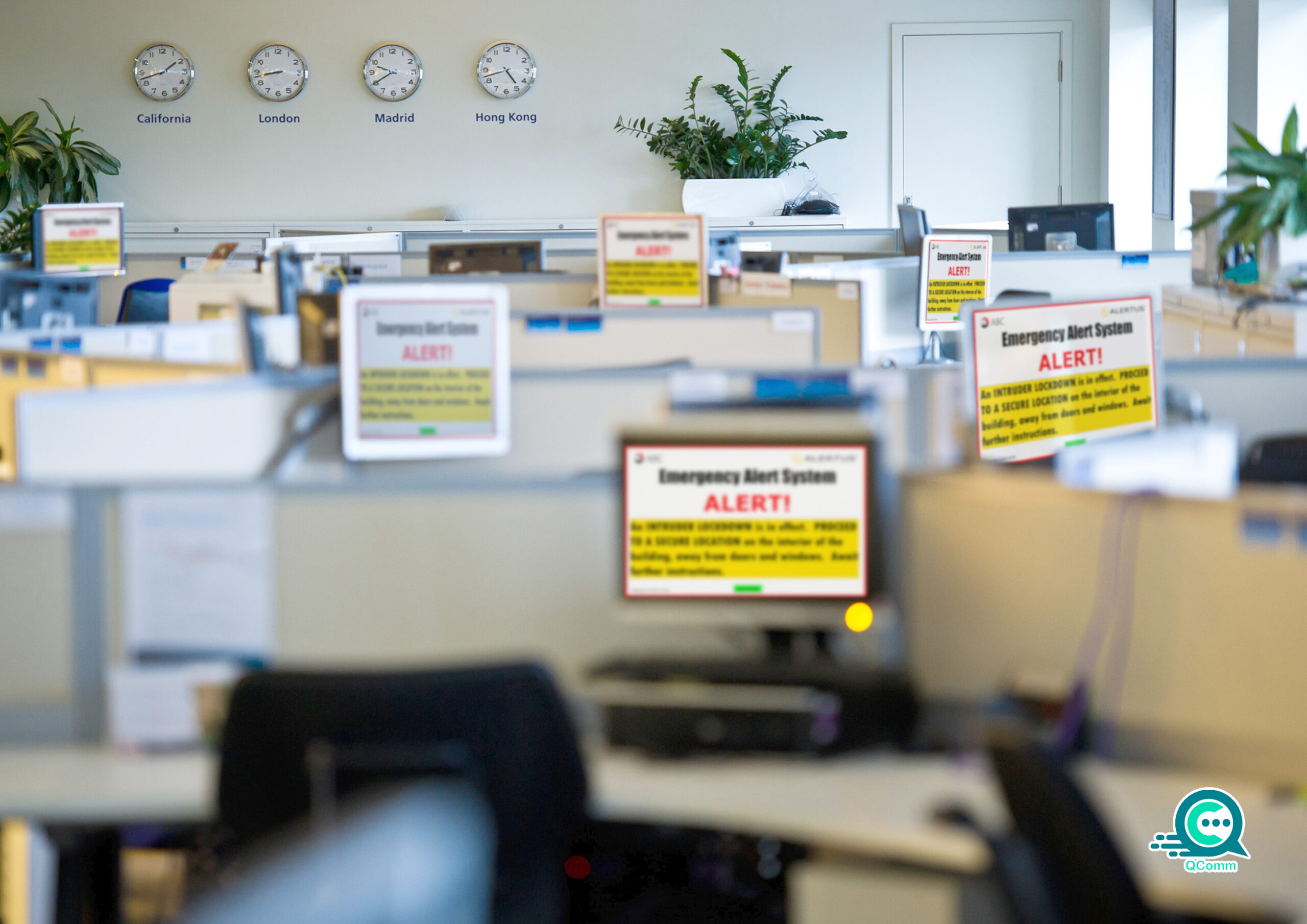
Developing a robust emergency communication plan involves more than just technology. Here are a few key practices that help organizations create a resilient strategy:
- Invest in Modern Tools: The right technology, like mass notification systems, helps automate and streamline alerts, ensuring timely and efficient communication.
- Train Your Team: Regular crisis management drills and communication workshops ensure that your staff is always prepared to act quickly and effectively.
- Tailor Your Plan: Customize your communication strategy to fit the specific needs and challenges of your industry, ensuring that your response is as effective as possible.
Test and Refine: Continuously test and improve your emergency communication systems to ensure they are always functioning optimally.
Empowering Resilience Across Industries
By implementing industry-specific communication systems, organizations can build stronger, more resilient operations. Such solutions are tailored to meet the needs of diverse industries. Here’s how we’ve helped organizations achieve success:
- Healthcare: Implemented a seamless emergency message system to enhance patient and staff safety.
- Education: Deployed teacher alert systems and student safety software to secure learning environments.
- Oil and Gas: Delivered state-of-the-art risk management software to minimize hazards.
- Retail and Corporate sectors: Clear communication ensures that employees and customers are informed and safe during any emergency.
The true value of these solutions lies in their ability to integrate seamlessly into existing systems, enhancing both preparedness and response without disrupting everyday operations. By ensuring that emergency communication is fast, clear, and effective, organizations can mitigate risks, protect lives, and maintain business continuity.
Building a culture of preparedness and resilience starts with a proactive approach to emergency communication. These tools not only help organizations respond effectively to crises, but they also foster confidence among employees, clients, and stakeholders, ensuring that businesses continue to thrive, no matter the challenges they face.
Resilience Through Communication: A Unified Vision for Safer Communities
Emergency communication is not just reactive; it’s a foundation for resilience across all sectors—healthcare, education, oil and gas, finance, and retail. Clear, fast communication can transform outcomes in critical situations, with solutions tailored to meet industry-specific challenges.
- Education: Tools like teacher alert systems and panic buttons ensure safety and peace of mind for students, staff, and parents. A culture of proactive communication ensures schools are always prepared.
- Oil & Gas: Real-time emergency response systems and risk management software minimize hazards, protecting workers and the environment—critical in this high-risk industry.
- Finance: In a fast-paced world of global transactions, integrated alert systems and communication plans safeguard financial operations during cyberattacks and disruptions.
At QComm, we combine advanced technology with tailored strategies, helping organizations stay resilient, prepared, and agile.
A Legacy of Impact
Research shows that organizations with robust emergency communication systems recover 45% faster and maintain higher trust, proving that preparedness is a measurable advantage.
QComm’s solutions are designed with this philosophy in mind, blending cutting-edge technology with user-centric design. Our mass notification systems, emergency alert software, and crisis communication training programs enable businesses to stay ahead of challenges rather than reacting to them. By fostering collaboration, streamlining response efforts, and ensuring transparency, we help organizations build not just a safer environment but a more resilient future.
Looking Ahead: A Collective Commitment
Communication is the cornerstone of progress, and its role during emergencies cannot be overstated. As we continue to advance our solutions, we invite you to join us in this journey.
Whether you’re an educator striving to secure your campus, an oil and gas executive mitigating risks, or a financial leader ensuring operational continuity, QComm is your ally in creating strategies that work when it matters most.
By investing in robust communication frameworks today, we collectively shape a future where resilience is not the exception but the norm. Together, let’s transform how emergencies are managed, ensuring safety, trust, and continuity for generations to come.
Subscribe now to stay updated and learn how QComm is shaping the future of communication, one solution at a time.

